The kirk moved brick-by-brick to make way for a shipyard
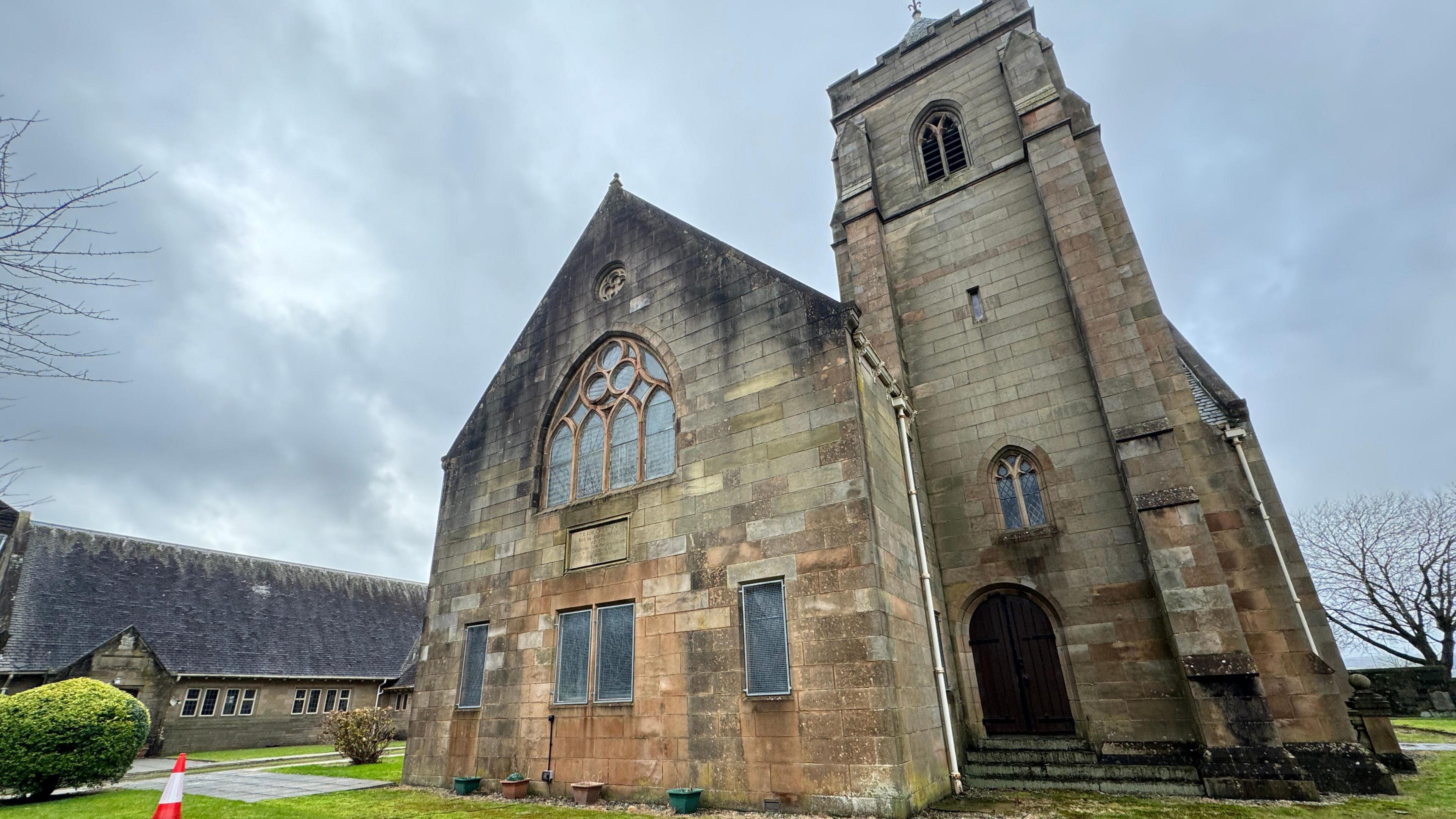
The Old West Kirk was moved to make way for a shipyard
- Published
For more than 300 years the Old West Kirk stood close to the water's edge in Greenock.
But in the 1920s, the church was dismantled brick-by-brick and moved a mile down the road - by horse and cart.
It was the result of a deal struck with the congregation by the shipbuilders Harland and Wolff, which wanted to expand on to the site.
And it meant that some of the finest stained glass windows in Scotland - by a group of renowned artists known as the pre-Raphaelite brotherhood - were saved.
Now the kirk is entering a new phase. It has been sold by the Church of Scotland and there are plans to turn it into a hub for community events, concerts and even weddings.
The church's original site is marked with a small sign in the car park of a bingo hall.
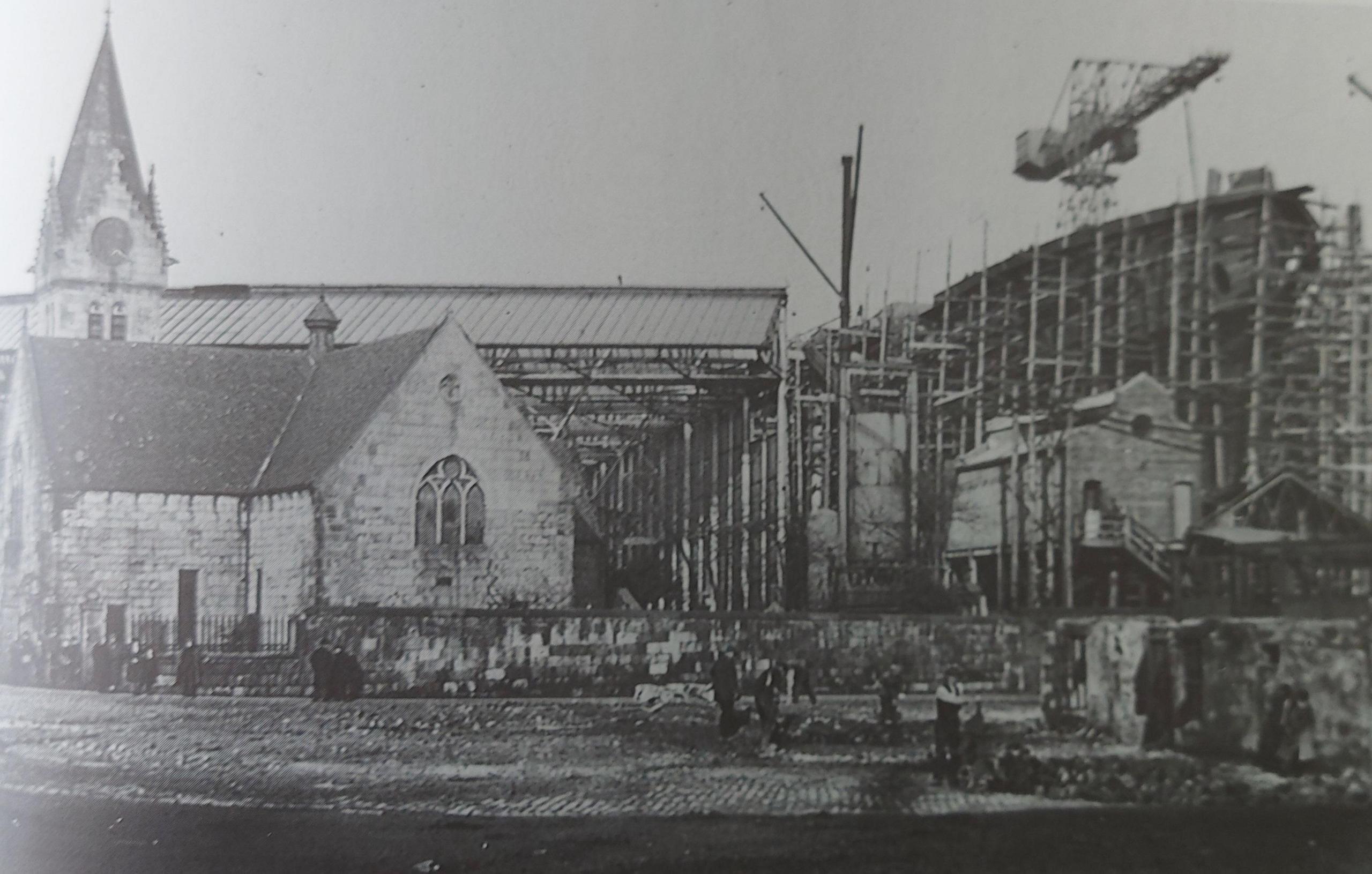
The Old West Kirk's original site behind the Harland and Wolff shipyard in Greenock.
The Old West Kirk was built in 1591 but in the 1920s the building came under threat from the thriving shipyards.
Space at Greenock's waterside was at a premium and the site of the church caught the eye of shipbuilding giants Harland and Wollf, which had purchased nearby Cairds shipyard.
Determined to expand, Harland and Wolff made offer after offer, with the hope of removing the church.
But locals objected, arguing that the prosperity of the church and graveyard should be maintained.
After many years of negotiations, a deal was struck which saw Harland and Wolff agree to foot the bill to move the church to a new site.
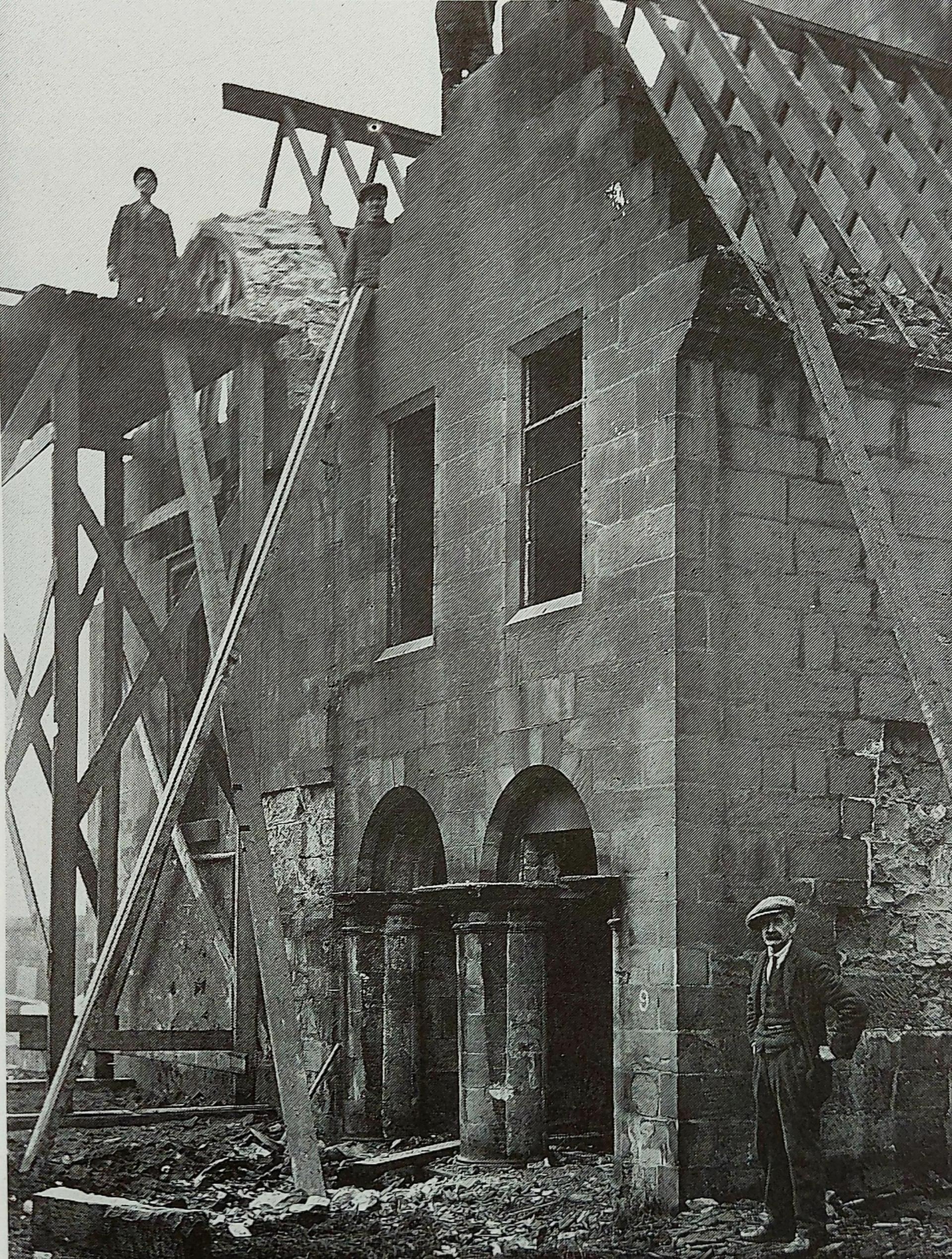
After a period of negotiation with shipbuilders, Harland and Wolff, the Old West Kirk was moved brick by brick to a new riverside site on the town's Esplanade.
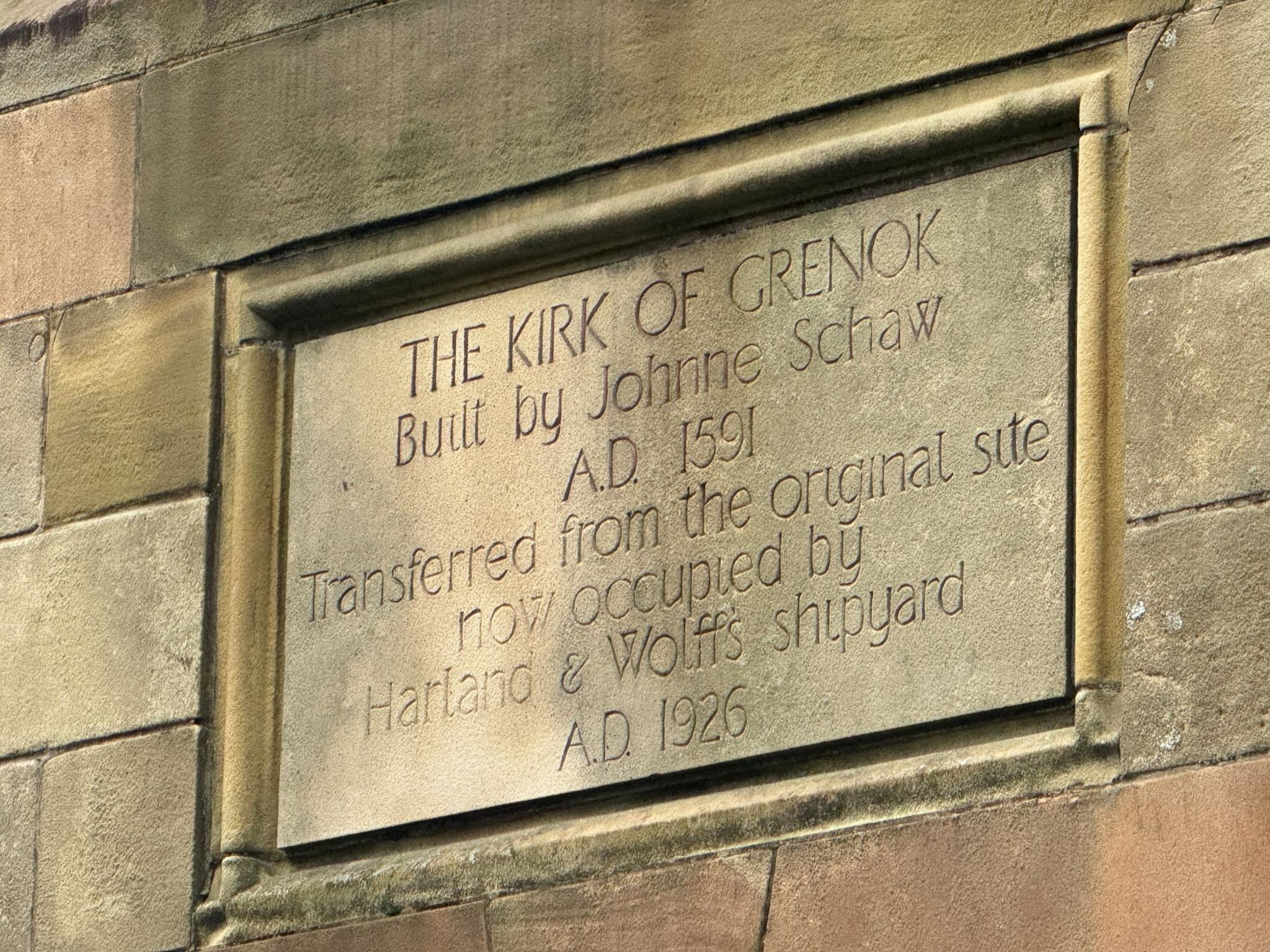
Deconstruction work began in 1926.
The Old West Kirk was dismantled brick by brick, and moved on horse and cart, to its new home at Greenock's Esplanade.
Harland and Wolff also paid for the construction of the Pirrie Hall - a place where services could take place until the the building work was finished.
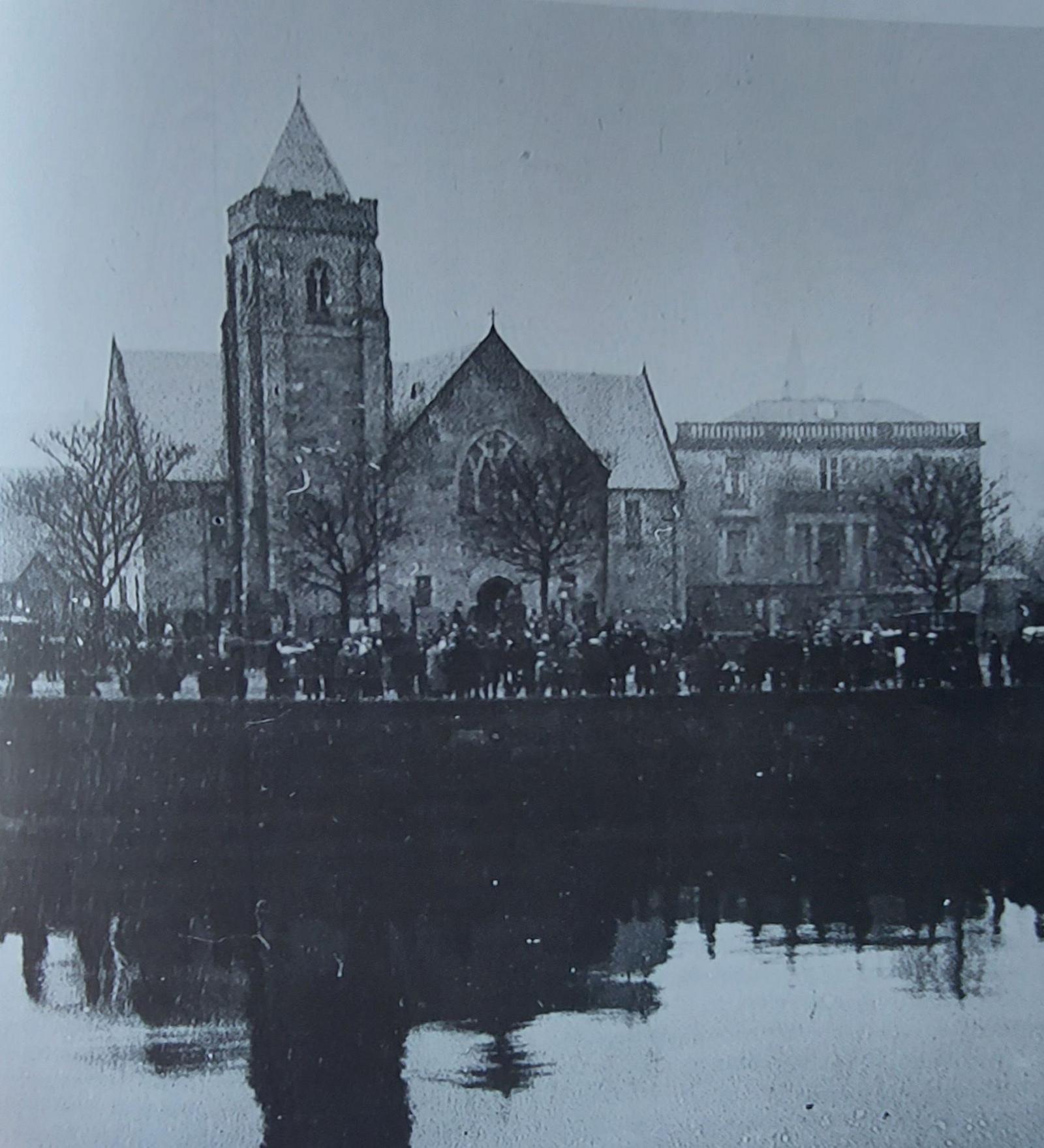
Following the big move, the church reopened to the congregation in February 1928.
Named after the then-chairman of the firm, Lord Pirrie, the hall still stands behind the church.
The congregation finally returned to their newly-transplanted church on Sunday 19 February 1928.
From the inside, very little would have seemed to have changed. Wooden furnishings, pews, pulpit and decorations from the previous location were once again in place - including a selection of very special and now very rare, stained glass windows.

'Music' by Edward Burne-Jones
During the 1800s the church's wealthy congregation commissioned the best artists of the day to design and create windows especially for the church.
Dante Gabriel Rossetti, Edward Burne-Jones and Daniel Cottier, members of a group of artists known as the pre-Raphaelite brotherhood, were commissioned to create their own windows for the church.
Works by the group can be found in galleries and museums the world over from the Musée d'Orsay, New York's Metropolitan Museum of Art and Tate Britain.
Daniel Cottier, born just up the road in Glasgow, was even thought to inspire the works of Louis Comfort Tiffany.
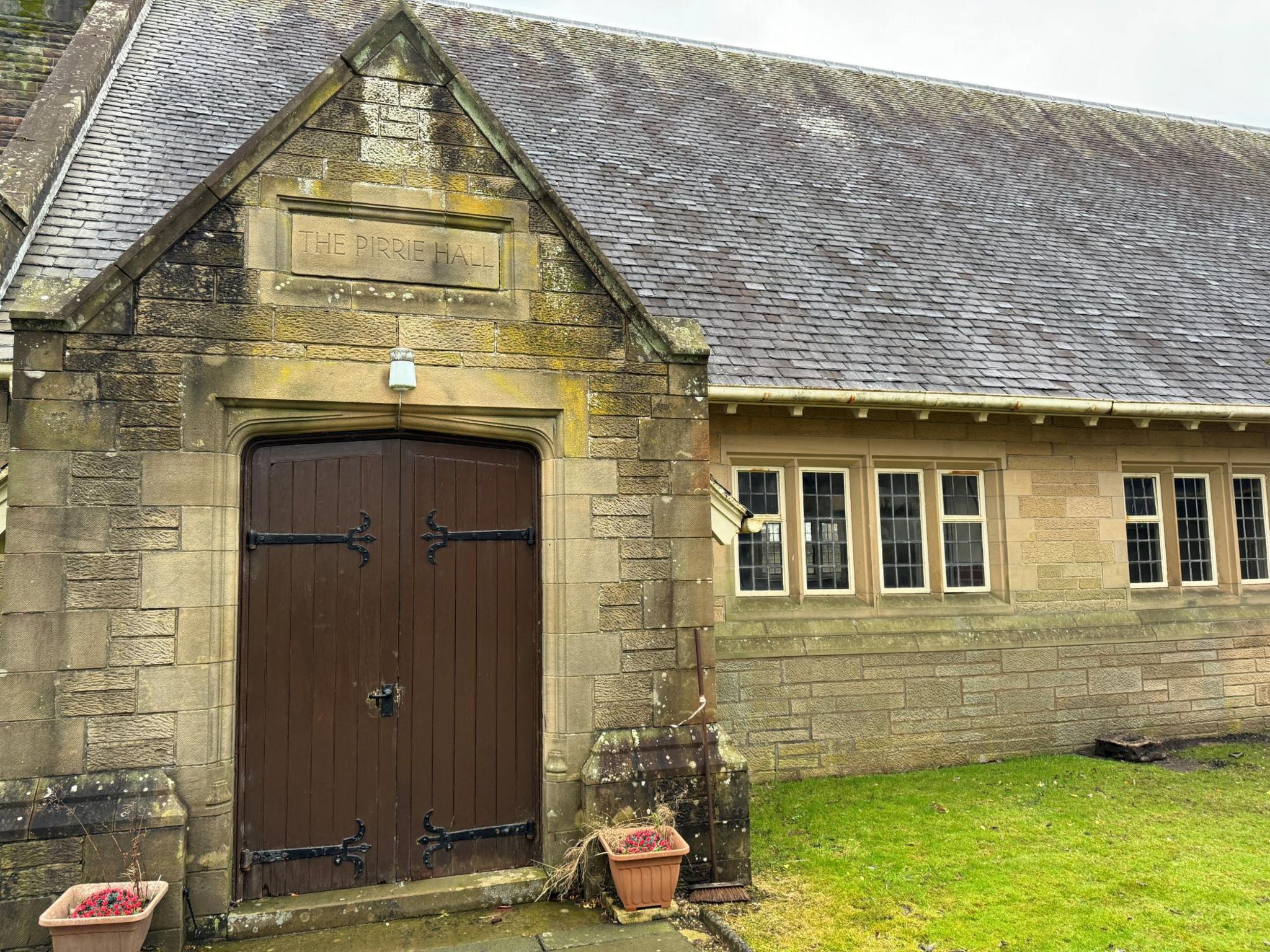
Pirrie Hall, gifted to the congregation by Harland and Wolff was named after H&W chairman, Lord William Pirrie
Alec Galloway, a local artist who was responsible for restoring the windows, said they have lasted the test of time because of their high quality.
"With the Burne-Jones windows, the quality of them is pretty unique. There's not many of those kind of windows in Scotland let alone in a wee church in Greenock where we've got several examples of them," he said.
"During the summer, the church opened for the cruise ships and a lot of enthusiasts from America, Japan, all of the world would come and they all know about Burne-Jones and are enthusiasts. They would come to the church to see those windows specifically."
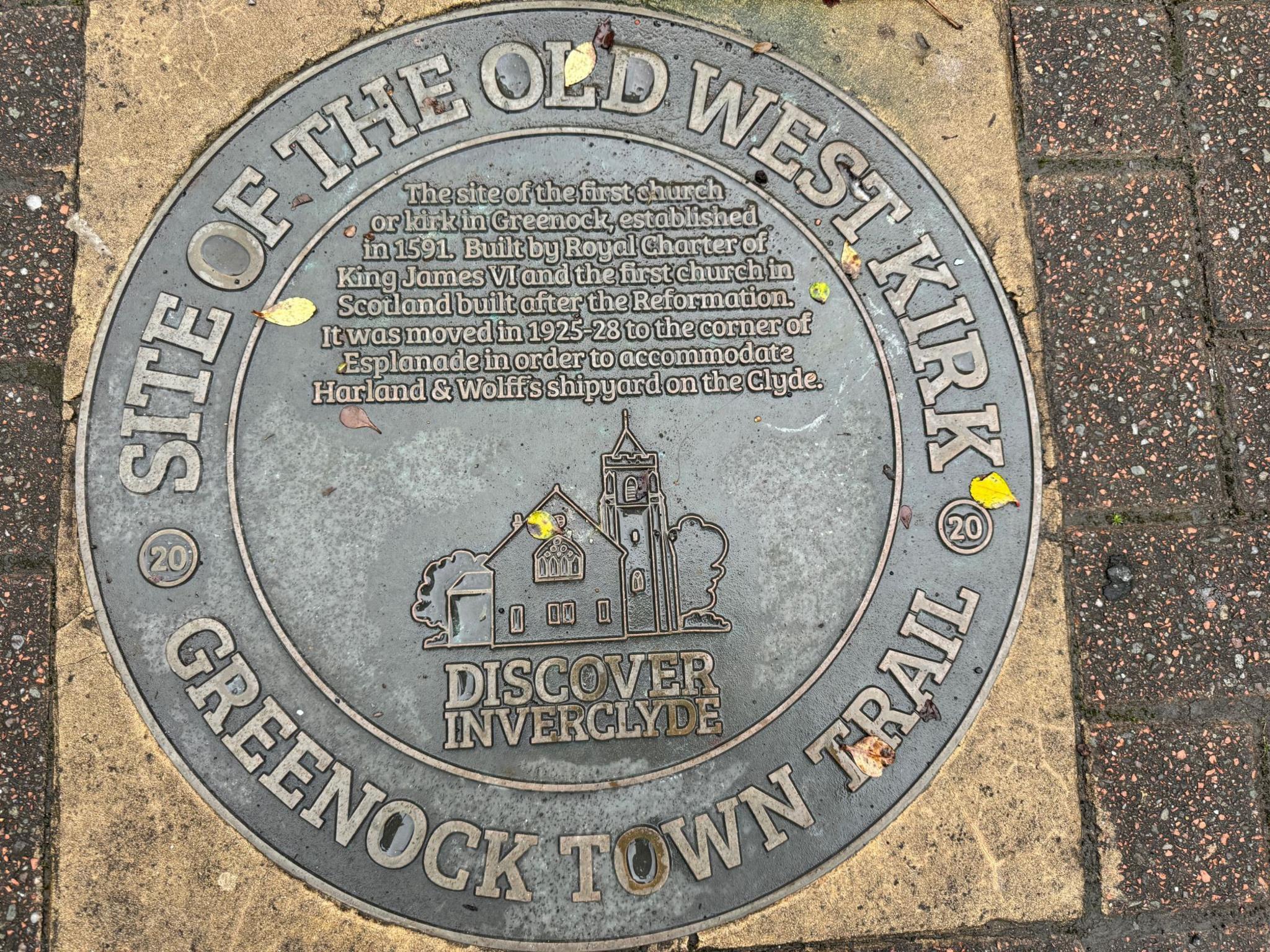
As well as taking charge of preservation of the rare windows, Mr Galloway is one of the artists in residence at the church as the building enters its next phase.
Purchased for more than £125,000 in 2022, the building is now owned by Greenock café owner, Marco Medinelli.
The protective nature of Greenockians for the Old West Kirk seemed just as strong in 2022 as it was in 1920, as a campaign was quickly formed on social media named "Save the Old West Kirk".
Mr Medinelli's purchase of the church came with the conditions that he would not relist the building for sale for at least two years, apply for planning consent or change the use of the building from its use as a community space.
As a grade A listed building, a small refresh is now taking place including laying new carpeting, installing toilets and improving the heating.
The new owner's vision for the church is to become a hub for community events from concerts and recitals to weddings and tours detailing the building's history and collection of rare Victorian stained glass artwork.
The church's ancillary buildings, including Pirrie hall, are additional spaces that will also be available to book for events.
The building at the rear of the property, divided into individual work spaces, is being rented out by local artists like Alec Galloway to allow the town's artistic sector to prosper.
"The church means a lot to people," Mr Medinelli said.
"I want to have the doors open on a summer's day, people wandering through. I want everyone to have access to it."
Get in touch
What stories you would like BBC News to cover from Glasgow and the west of Scotland?